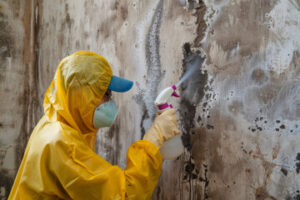The Importance of Hiring Professional Piano Movers
The piano is a complicated, heavy instrument that requires special care to move. Without the right equipment, movers can easily damage the piano during transport.
If you’re moving a piano, it’s important to find professional movers. They’ll know how to protect the instrument from damage, and they will be able to navigate tight spaces. Visit https://pianomoverscharleston.com/ to learn more.

Pianos are heavy and delicate instruments that require professional expertise to transport. They can easily get damaged or even break when handled by inexperienced movers. Hiring a professional moving company to take on this task can save you time, money, and stress in the long run. Piano movers have years of experience and the necessary equipment to handle this task safely. They also offer a variety of white-glove services for their clients. This includes packing, unpacking, storage, and post-move tuning. They will also perform an assessment of your home to make sure that they can safely maneuver the piano through doorways and staircases.
Whether you have an upright or grand piano, these professionals can move it from one location to another without damaging the instrument or your home. They have specialized dollies, straps, and wrappings that keep the piano secure during transportation. They also have access to stair climbers and ramps for more complex moves. These tools and their experience mean that they can quickly navigate a tight space without damaging the piano or your walls.
While regular household movers may claim that they can move a piano, they have little to no experience handling such an intricate and expensive piece of furniture. Many homeowners have heard the horror stories of pianos getting smashed or running into walls during a move. These disasters are often caused by a lack of training, equipment, and skill. In addition, many household movers are not insured to transport pianos.
When hiring piano movers, be sure to ask about their experience and what type of insurance they have. Most reputable piano movers will have full-coverage insurance to protect their customers in the event of damage or loss. If you’re not sure, ask to see a copy of their policy before signing any contracts. You can also purchase a uShip protection plan to close any gaps in coverage. This will provide you with peace of mind and help ensure that your piano arrives at its new home in perfect condition. The extra cost is well worth it compared to the potential expenses of having to repair or replace your piano.
Equipment
Professional piano movers use specialized equipment to make the move safer and more efficient. They have tools like piano dollies, which are four-wheeled carts designed to support a piano’s weight without straining the instrument or its legs. They also have straps and padding that secure the piano during transport, distributing its weight evenly and reducing the risk of damage. They also use moving blankets to protect the piano from scratches and dents. Additionally, a sturdy pair of gloves can help them grip the instrument more securely and reduce slippage, ensuring that the piano is handled properly.
Professional movers also understand the specific challenges of maneuvering these large instruments through doorways, corners, stairs, and elevators. They take the time to preplan the move, measuring doorways, hallways, and staircases to ensure there’s enough clearance for the piano. They also remove any obstacles from the path of travel, such as rugs, furniture, or decorations. This prevents the piano from accidentally damaging the items it’s moving or causing injury to people handling it.
A good example of this is a story about a family who moved their apartment-sized piano into their new home. Unfortunately, they couldn’t fit the piano down the stairs. The family tried to push it through the doorway, but they ended up damaging the walls and door frame of their home. This is a common problem that can be avoided by hiring professional piano movers. Ultimately, the cost of hiring professionals is far less expensive than paying for repair bills or replacing damaged items. This is particularly true for moves involving older or more delicate instruments. A good way to find a qualified piano mover is to look for one that offers a full range of moving services. This way, you can be sure that the entire process will be completed safely and efficiently. This will minimize the risk of damage to your heirloom and ensure that it arrives at its destination in excellent condition. This is why it’s always best to let the experts handle a move of this size and complexity.
Safety
Professional piano movers have been trained to handle heavy and specialty equipment with care. They take precautions to protect both the piano and the walls and floors of your home during transport, minimizing damage that can occur in the event of a crash or other accident. They also know how to properly maneuver the instrument through narrow hallways and staircases, reducing the risk of damage. In addition, they have a strong understanding of the anatomy of pianos and the specific techniques required for safe handling.
When it comes to moving a piano, even the slightest bump can cause significant damage. In addition to affecting the sound quality of the piano, damage can also increase the cost of repairs. Regular movers may claim to be capable of moving a piano, but they lack the specialized training and equipment needed to safely transport such an expensive instrument. Hiring a team of piano movers can help you avoid the risk of damage and reduce your move costs.
Professional movers prepare the piano for transport by cleaning and removing all decorative items. They also use a piano board to provide stability during transport. They measure doorways and staircases to ensure that the piano will fit, and they clear any obstacles that could interfere with the movement of the instrument. They also use special dollies that are designed to support the weight and structure of pianos, reducing the risk of damage during transport. In addition, they use lifting straps to distribute the piano’s weight evenly and reduce the risk of injury to movers.
Despite careful handling, accidents can still happen during a move. Pianos are particularly vulnerable to damage from bumps, vibrations, and temperature changes. Piano movers take a number of safety measures to minimize the risk of these accidents, including padding the piano and using climate-controlled vehicles for transportation. These precautions can significantly reduce the likelihood of damage and reduce the cost of repairs after the move.
Time
A piano is an expensive and delicate instrument that requires special care when moving. This is because it can easily be damaged if the process is done incorrectly. To prevent this, it is recommended to hire a team of professional piano movers to handle the move for you. This way, you can rest assured that your piano will reach its destination safely and without any damage.
Piano movers are experienced in handling instruments of all shapes and sizes. They know how to maneuver these heavy items through tight spaces and stairways without causing any damage. Additionally, they have access to the proper tools and equipment required for the job, including large trucks with heavy-duty lift-gates. Whether you are moving your piano across the city or to another state, they can transport it to its new home.
While household movers are good at moving standard furniture and boxes, they have very little experience with delicate items like a piano. They also don’t have the specialized equipment and techniques required to move these types of items. When you factor in the costs of repairing a chipped piano or a hole in your wall, it is often more cost-effective to hire a professional to handle the move.
When choosing a piano moving service, be sure to ask about their experience and pricing options. A quality moving company will be able to provide you with a detailed quote that includes all of the services you need to transport your piano safely. This will include the size of the truck, your chosen moving date, disassembly and reassembly, and coverage for property damage.
